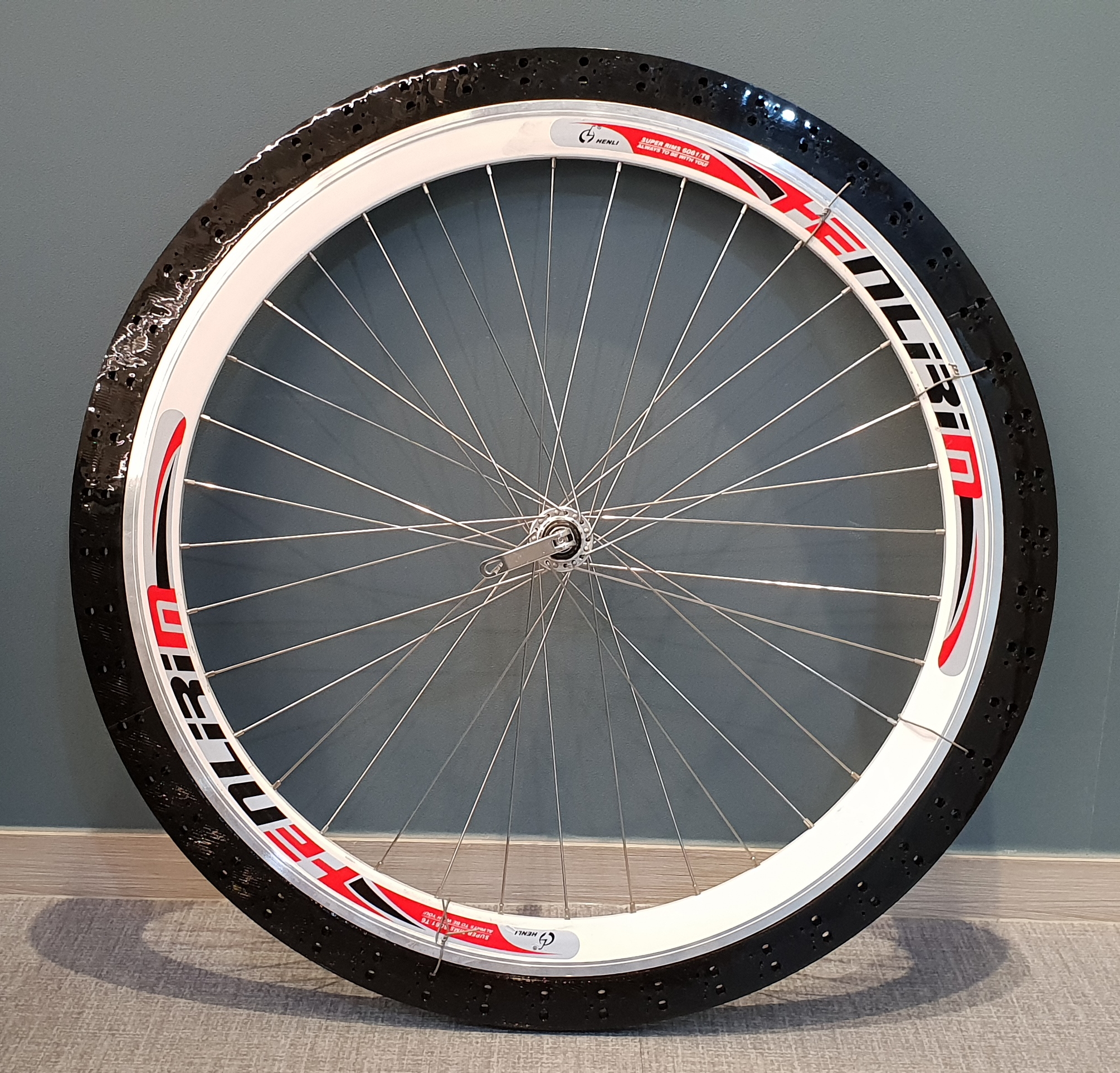Based in Ulsan, South Korea, the Korean Additive Manufacturing User Group (K-AMUG) is a developer of 3D printing materials, equipment, manufacturing processes and service-related technologies. It’s latest project, a 3D printed lightweight, airless tire, has been displayed at Techfesta 3D printing expo in Ulsan, and presents the possibilities of future sports product design.

K-AMUG
Founded in 2017, K-AMUG’s goal is to integrate 3D printing technology into local manufacturing industries such as automotive and shipbuilding. Though it has no affiliation with the U.S. Additive Manufacturing Users Group (AMUG), K-AMUG was established “In line with this trend […] as the necessity of cooperation between additive manufacturing engineers and consumers had increased and the necessity of industrial development had been continuously raised.”
3D printed airless tire
K-AMUG’s 3D printed tire project was lead by professor Yi Chang Kyoo of Hanseo University, Seosan, alongside team members Park Yoo-jin and senior engineer, Jung Sung-ho. It is made from flexible TPU, applying a lattice pattern.
3D printed as a single piece, the tire measures 20mm in width, 622mm in diameter inside the wheel, and 700mm diameter outside. K-AMUG claims the tire is faster than its air-filled equivalents, performing without the need for reinflation. The tires have a bright sheen on them and were demonstrated at Techfesta attached to a black L-MTBMANHATTAN 26 GS Alton brand sports bicycle.

The future of sports equipment?
Though a novel application, the concept of an airless 3D printed tire is not entirely new. Recently, large-scale 3D printer provider BigRep released a case study featuring a 3D printed airless tire for a Specialized Globe Centrum bike.
Tire manufacturing giants Goodyear and Michelin have also explored this concept for car tires. The Goodyear Oxygen is a 3D printed tire that contains moss which absorbs moisture and releases fresh oxygen, in an effort to cut down on carbon emissions. And Michelin proposed a ‘Print&Go’ system for reprinting tread on-demand. In China, Linglong Tire, developed the country’s first 3D printed tire in 2017.
According to Kyoo, the use of 3D printing in K-AMUG’s tire led to a 17% weight reduction, going from 2.27kg to 1.89kg when compared to a traditional 700C tire.
For more of the latest research related to 3D printing sign up to the 3D Printing Industry newsletter, Also, follow us on Twitter, and like us on Facebook.
On the lookout for new talent or seeking a career change? Search and post 3D Printing Jobs for opportunities and new talent across engineering, marketing, sales and more.
Featured image show K-AMUG’s 3D printed airless tire. Photo via K-AMUG.

